Title Description:
Source: LeetCode
Link: https://leetcode-cn.com/problems/er-cha-sou-suo-shu-de-di-kda-jie-dian-lcof
- Given a binary search tree, please find the value of the k-largest node.
Example:
- Example 1:
input: root = [3,1,4,null,2], k = 1 3 / \ 1 4 \ 2 output: 4
- Example 2:
input: root = [5,3,6,2,4,null,null,1], k = 3
5
/ \
3 6
/ \
2 4
/
1
output: 4
- Tips:
1 ≤ k ≤ Number of binary search tree elements
Analytical train of thought 1: violent solution
- Using the queue, directly take out all nodes, put them into the container, sort them, and return the corresponding K value according to the index.
Code (python3)
# Definition for a binary tree node.
# class TreeNode:
# def __init__(self, x):
# self.val = x
# self.left = None
# self.right = None
class Solution:
def kthLargest(self, root: TreeNode, k: int) -> int:
res = []
queue = [root]
while queue: # Jump out of loop when queue is empty
node = queue.pop() # Delete this layer node
res.append(node.val)
if node.left: queue.append(node.left) # If the node of the current layer has child nodes, it will be added to the queue for the next round of child node extraction
if node.right: queue.append(node.right)
res.sort() # sort
return res[-k]
Code (cpp)
Analytic idea 2: use the ergodic property of binary search tree (medium order ergodic + early return)
-
Through the different access order of the nodes of the tree, there are three traversals:
-
Preorder: (root, left, right) first accesses the root node, then recursively accesses the left subtree in the preorder, and finally accesses the right subtree in the preorder.
-
inorder: (left, root, right)
-
Subsequent traversal: (left, right, root)
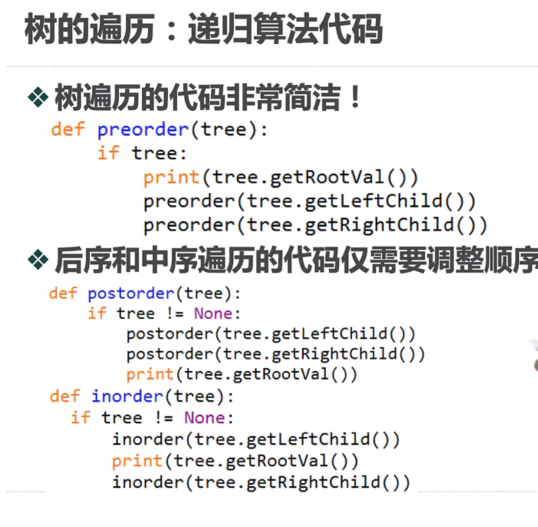
-
The nature of binary search tree (BST): keys smaller than the parent node appear in the left subtree and keys larger than the parent node appear in the right subtree.
-
Example:
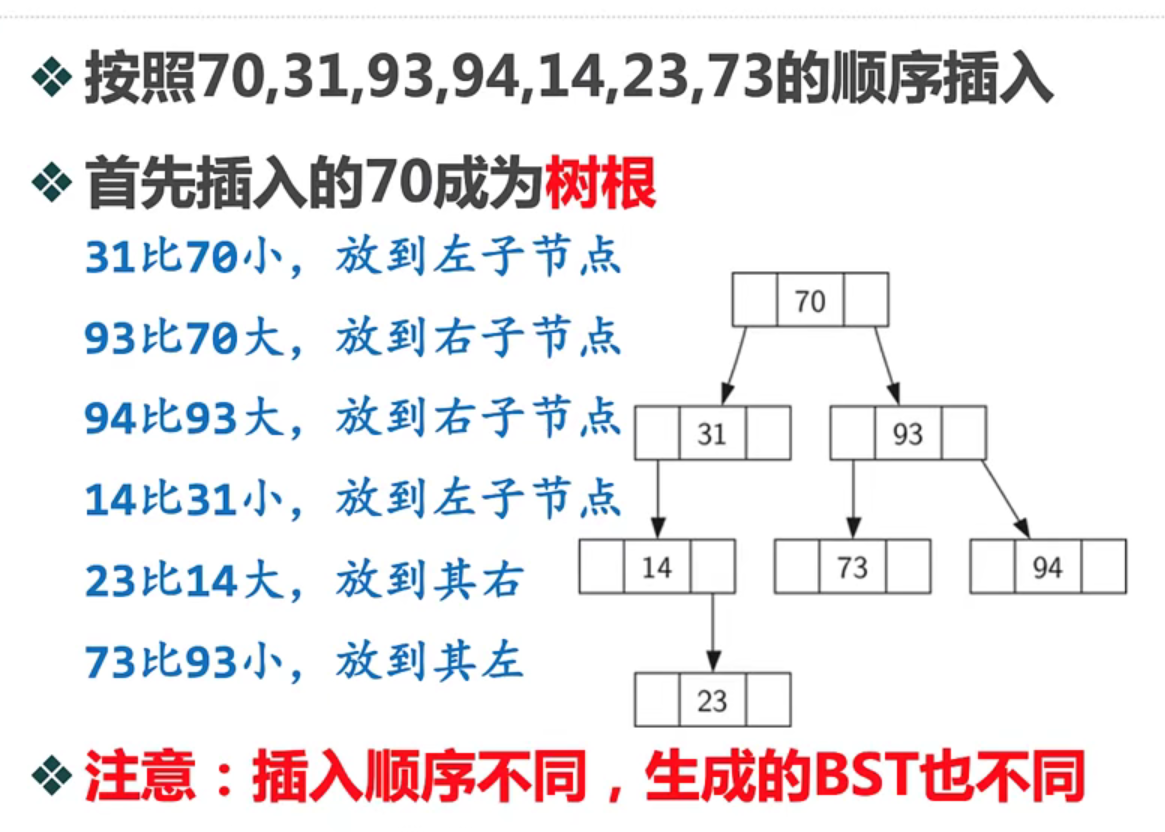
-
Based on the properties of binary search tree, we can know that the middle order traversal (left, root and right) is an increasing sequence.
-
Then, the middle order traversal reverse order of the binary search tree is a decreasing sequence.
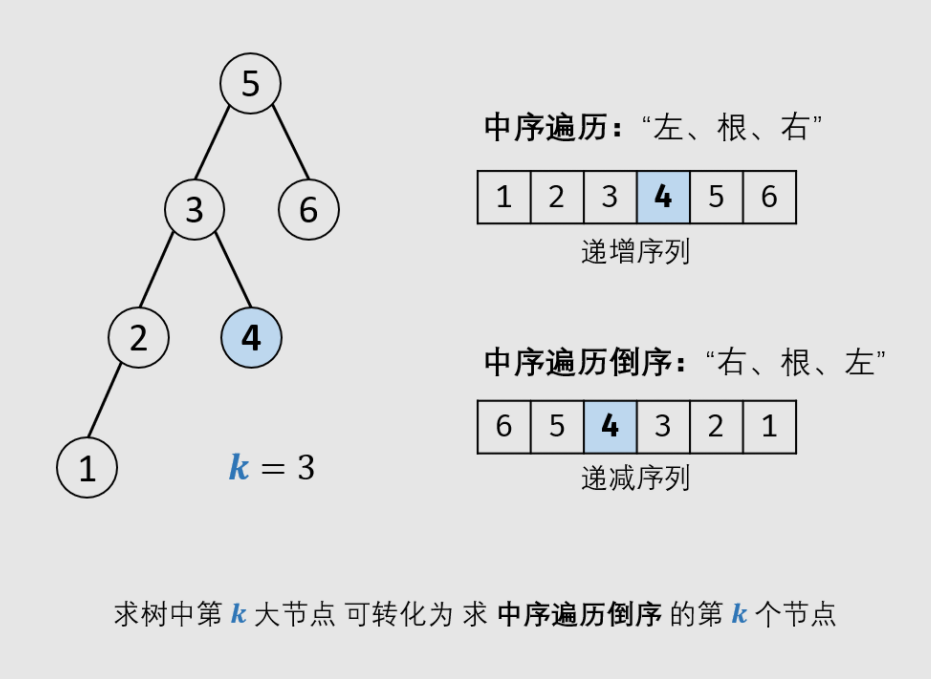
-
Recursive code for middle order traversal of tree:
def inorder(root): if not root: return inorder(root.left) # Access left print(root.val) # Access root (medium) inorder(root.right) # Access right
- Recursive code in reverse order of middle order traversal of tree:
def inorder(root): if not root: return inorder(root.right) # Access right print(root.val) # Access root (medium) inorder(root.left) # Access left
- Find the node logic with the largest K in the tree node:
1. Count during recursive traversal and count the serial number of the current node;
- When recursing to the k th node, the result res shall be recorded;
- After recording the results, the subsequent traversal will lose its meaning and should be terminated in advance (i.e. returned);
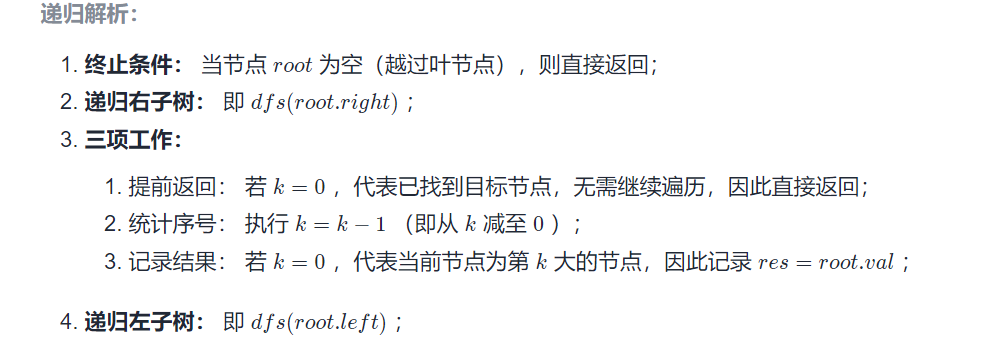
Schematic diagram of algorithm flow:
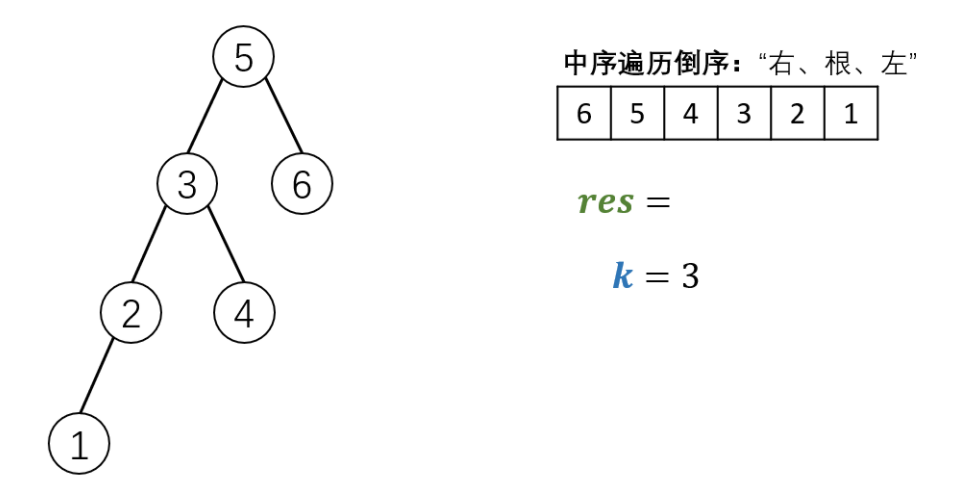
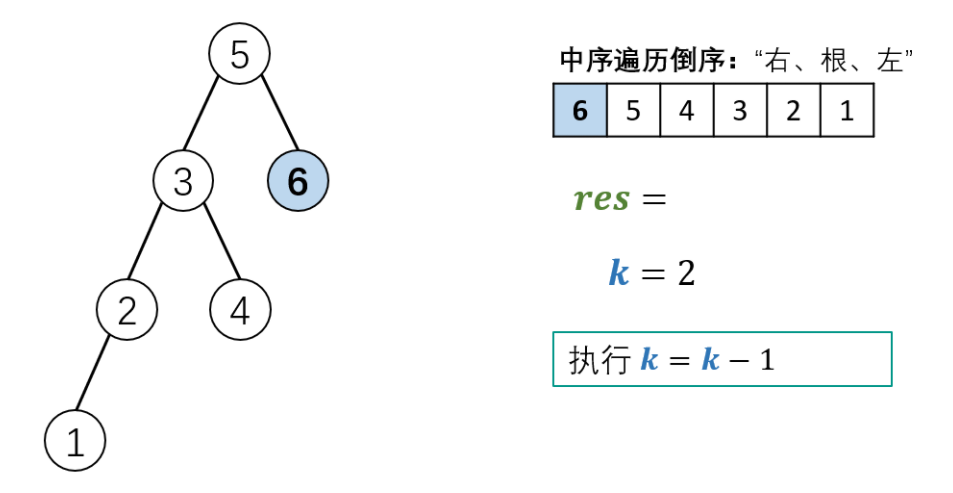
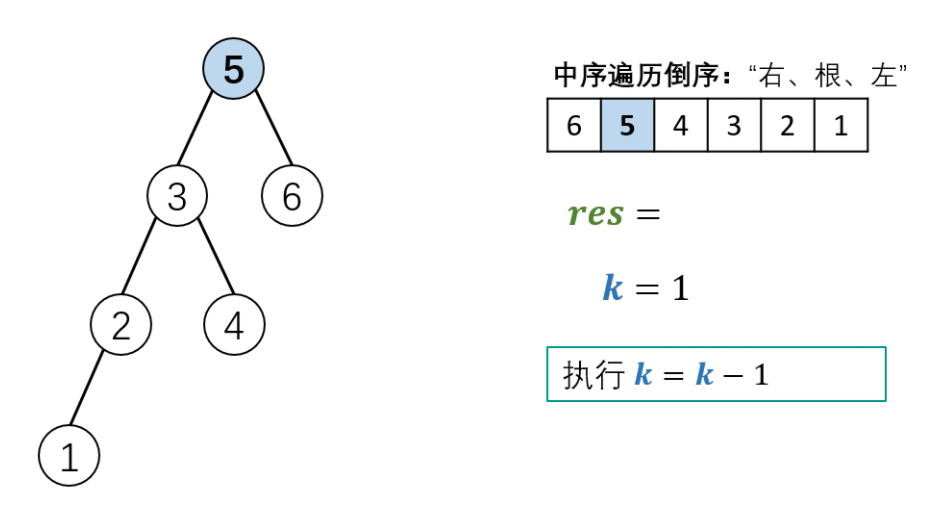
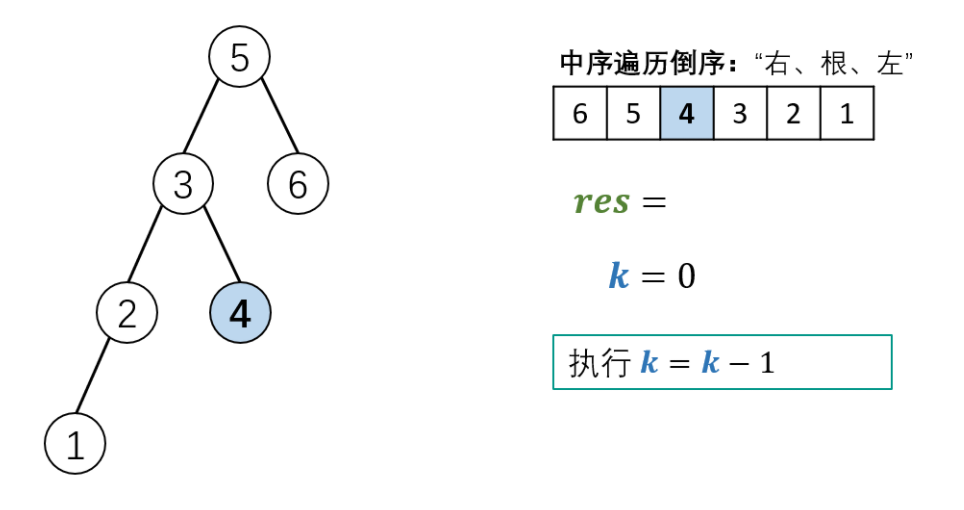
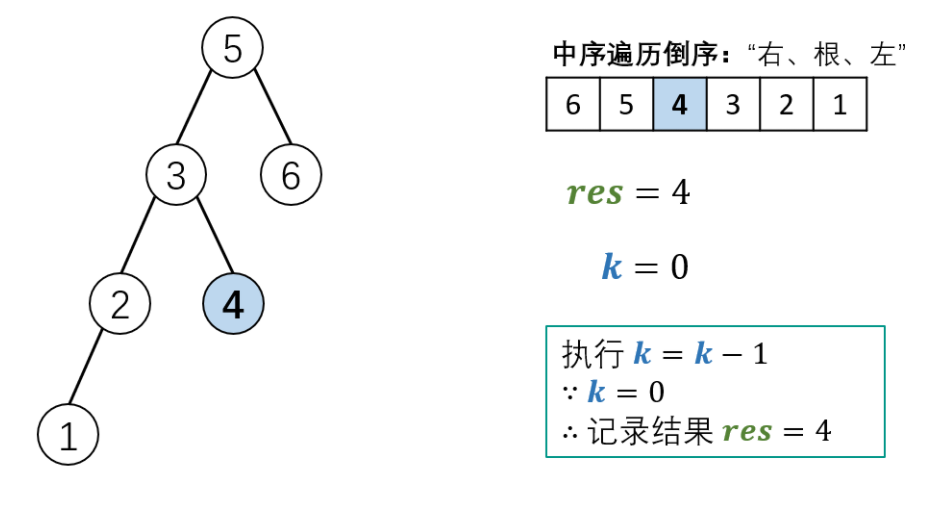
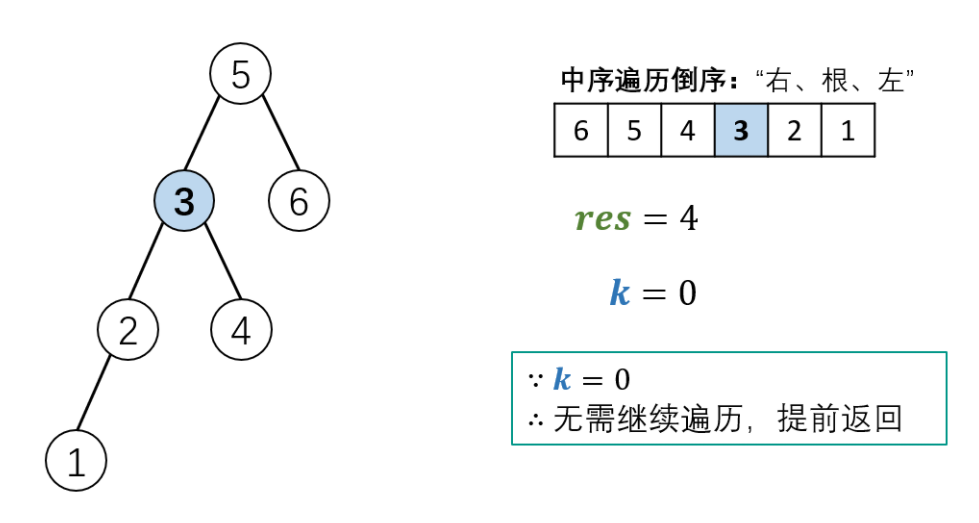
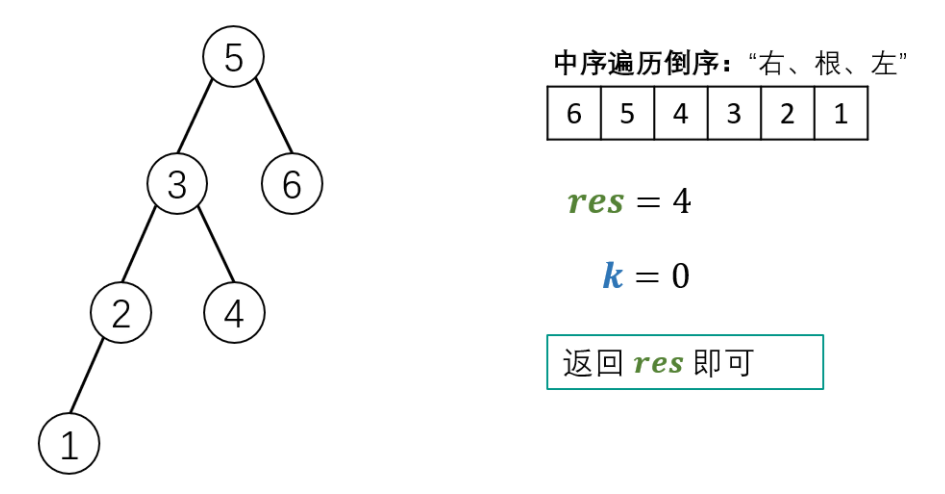
Code (python3)
# Definition for a binary tree node.
# class TreeNode:
# def __init__(self, x):
# self.val = x
# self.left = None
# self.right = None
class Solution:
def kthLargest(self, root: TreeNode, k: int) -> int:
def reinorder(root): # The formal parameter k cannot change with the iteration of the reinorder function
if not root :return
reinorder(root.right)
if self.k == 0: return # Judge the largest first number in reverse order; Understanding (self.k): the reinorder function directly uses the formal parameter value k to initialize the variable
self.k -=1 # The recursive index value K-1 is greater than 0
if self.k == 0: self.res = root.val
reinorder(root.left)
self.k = k # Initialize the class variable count with the formal parameter value k
reinorder(root)
return self.res
Code (cpp)
Ergodic reverse order
/**
* Definition for a binary tree node.
* struct TreeNode {
* int val;
* TreeNode *left;
* TreeNode *right;
* TreeNode(int x) : val(x), left(NULL), right(NULL) {}
* };
*/
class Solution {
private:
int res;
public:
// Traversal of declaration tree in reverse order
void reinorder(TreeNode* root,int & k){ // Reference passing makes all recursive functions share a k
if(!root) return;
reinorder(root->right,k); // Access right subtree node
// if (k==0) return; // Early return
k--;
if (!k) res = root->val; // Access root node
reinorder(root->left,k); // Access left subtree node
}
int kthLargest(TreeNode* root, int k) {
reinorder(root,k);
return res;
}
};
Complexity analysis:
- Time complexity O(N): when the tree degenerates into a linked list (all right child nodes), the recursion depth is N regardless of the value of k, taking O(N) time.
- Space complexity O(N): when the tree degenerates into a linked list (all right child nodes), the system uses a stack space of O(N).